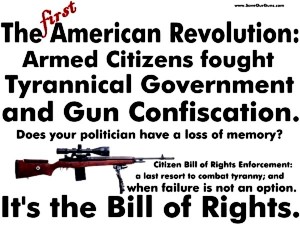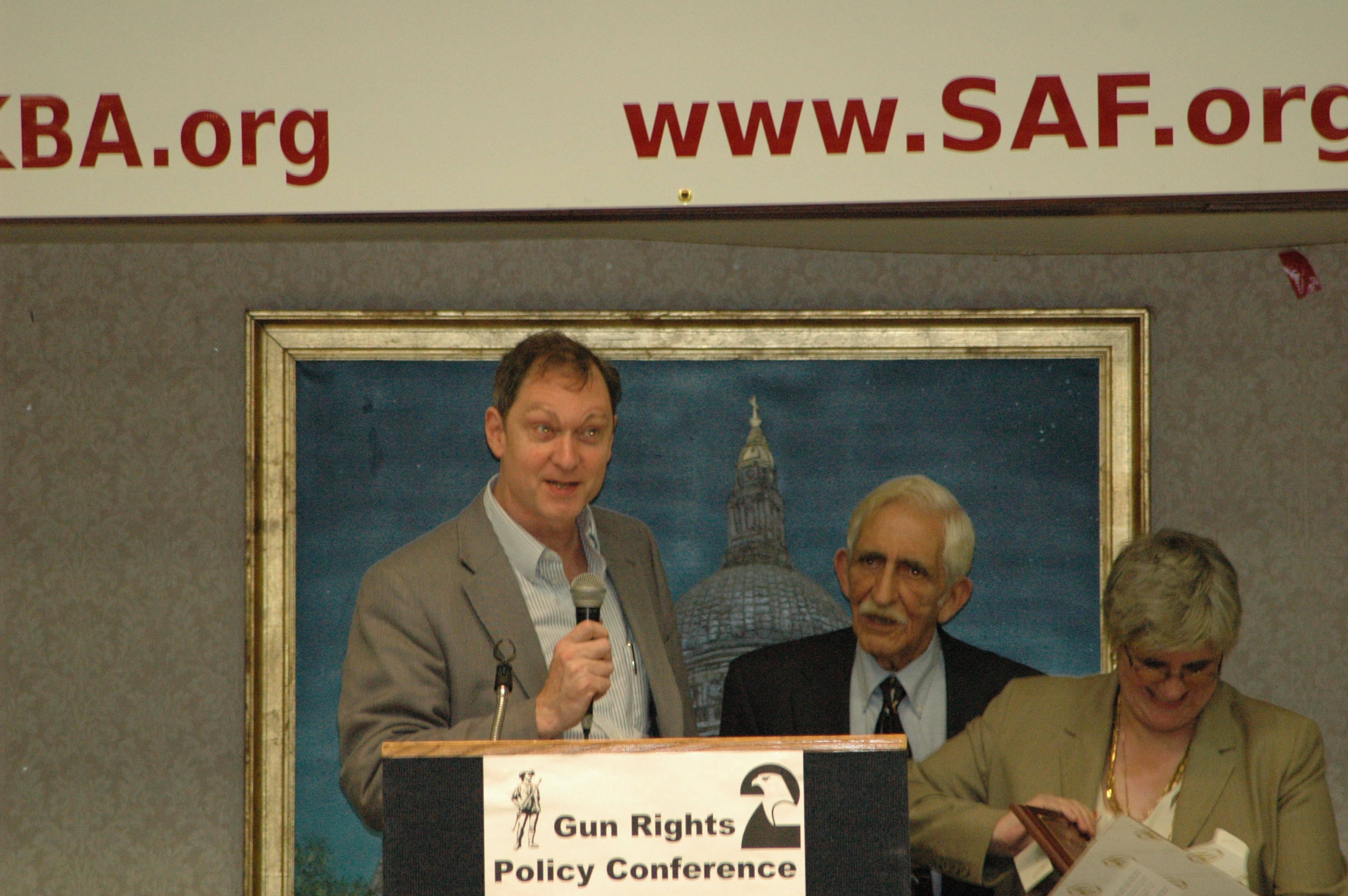For our first post, we thought it would be an excellent idea to tackle one of the most popular analogies used to combat gun control proposals. Although it has been debunked numerous times (most memorably by Jon Stewart), it still somehow persists:
Myth:
“Gun control is like trying to reduce drunk driving by making it tougher for sober people to own cars.” – Unknown
“Drunk driving. Do we go to the Ford Motor Company and tell them, stop making these automobiles because people get drunk and kill people in cars?” – Jesse Ventura discussing gun control
Overview of Pro-Gun Arguments:
- It is hypocritical to treat fatalities from car accidents and fatalities from firearms differently. A life is a life. Yet gun control advocates suggest bans on firearms because they kill, but not on cars.
- Regulation on cars and guns is ultimately futile as the real problem lies with the people using the object, not the object itself.
- Why punish law abiding citizens for the mistakes of a few irresponsible people?
Reality:
We will establish a basic brightline to challenge all analogies of this sort: regulation is justified when the benefits outweigh the costs. Regulation in one area does not necessitate regulation in all conceivable areas. We could immediately reduce the number of automobile accidents to a trivial amount, for example, if we lowered the speed limit to 10 mph, but such a policy would have unacceptable consequences for productivity loss, economic growth, police enforcement, and so on. This framework is eminently valuable because it forces policymakers to rely on data and cost-benefit analysis, rather than intuition. It’s tempting to reduce policy proposals to argumentum ad absurdum by invitation of analogy, but this is not how good policy is formed. That something appears absurd in a completely different context is not an argument.
This analogy is non-responsive as the social utility of guns and cars differ in orders of magnitude. The fundamental purpose of a car, at its most basic level, is to convey someone from point A to point B. The purpose of a gun, on the other hand, is to inflict a significant amount of damage on whatever or whomever the gun is aimed at once the trigger is pulled. This is true regardless of whether a gun is used for self-defense, hunting, recreation, or murder. Although a life is a life, killing somebody by accident is not the same as killing somebody on purpose. Except in rare circumstances, killing somebody with a car is an accident. Even when intoxicated, the driver’s intent is not to harm another person. When a shooter fires his or her weapon at another person, whether it be in self-defense or not, the intent is to seriously injure or kill the target. Although gun accidents do happen, they result in a distinct minority of the casualties from gun violence (and we support regulation that minimizes the frequency and severity of gun accidents when they do happen). Guns are weapons, cars are a mode of transportation. There is a significant difference. This line of argument also ignores that the only gun ban currently being proposed is on assault rifles, and that there are many effective regulations other than bans to stem gun violence.
Even accepting the analogy as valid, however, leads to the opposite conclusion intended by gun advocates. Instead of illustrating the complete inanity and futility of gun regulation, the analogy highlights the empirical efficacy of car regulation with respect to decreased accident and mortality rates. Regulations on cars and driving have saved nearly 85,000 lives and $600 billion over the past two decades. Even the most simple and ubiquitous safety measures such as seat belts and airbags have reduced mortality rates. Over the past three decades, drunk driving fatalities have fallen 65%. While this staggering drop may not entirely be explained by regulation, the bulk of these changes are a direct result of such policies.
Though this examination of car safety laws is necessarily incomplete, it serves to demonstrate the disingenuousness of gun advocates’ claims: there is a middle ground in the decision between complete freedom and a total ban, and it is our obligation to investigate the options available to us in that respect.
If we wish to continue with the flawed car/gun analogy, we would like to posit a more accurate thought experiment:
Consider the hypothetical “Destroyer” (popularly referred to as the DEV-mobile [Destroy Everything Vehicle]), an armored car/tank hybrid developed for desert warfare by the military. After serving a brief but glorious career in the military, the model was quickly copied by a consortium of car manufacturers and converted for civilian use. Think of the DEV-mobile as a Batmobile facsimile with a couple of crucial differences. First, through a massive safety oversight, somebody forgot locks for the doors while converting the vehicle. Initial concerns were brushed off as who would possibly think of stealing a DEV-mobile, and of course kids would instinctively know not to play with such a fearsome vehicle. Second, through a bizarre loophole meant for segways, you do not need a license to drive a DEV-mobile. Although Congress investigated the issue several times, car manufacturers were able to convince enough lawmakers that licenses really weren’t necessary. Finally, despite the removal of it’s more militaristic features (such as heat-seeking missiles), these elements can be reinstalled if you know the right person at a car show.
As you can probably imagine, the DEV-mobile was an instant success. Manufacturers touted the DEV-mobile as the most macho way to drive anywhere and fully embraced both the name Destroyer and its military credentials. After several years, however, security concerns began to mount. High speed chases were suddenly becoming far more dangerous. Road rage often escalated into a lethal encounter. Children playing in the car would accidently push the wrong button. Gangs began winning street battles against police with remilitarized vehicles. Homicidal maniacs would drive them into crowded public places and push the self-destruct button, killing many innocent bystanders. In an attempt to stem the tide of negative press, manufacturers relabeled the DEV-mobile as the “All Purpose Off Road Camping Vehicle.” Safety concerns were construed by DEV-mobile manufacturers and owners as assaults on their fundamental liberties. DEV-mobile advocates argued Freedom of Movement under the Privileges and Immunities Clause of the United States Constitution gives every American citizen a sacrosanct right to own such a vehicle. When regulation proponents suggested that Americans didn’t need such a destructive, dangerous vehicle in order to satisfy Freedom of Movement– that a basic car was sufficient– DEV-mobile proponents accused regulators of paternalism, of initiating a slippery slope of increasingly reactionary regulations that would eventually reduce each citizens to bicycles and skateboards. Who were these faceless bureaucrats to decide for me and my family what was sufficient for our needs? Why punish law abiding citizens for the crimes of a few? Some DEV-mobile fans went further and suggested the only way to stop a bad guy with a DEV-mobile is a good guy with a DEV-mobile. More DEV-mobiles and easier access to the vehicles should be promoted, not more regulations or, heaven forbid, an outright ban.
Though this analogy, like all analogies, suffers from imprecision, it serves a valuable purpose in illustrating the absurdity of pro-gun rejoinders and, in particular, the weak justification for assault rifles. For starters, the lack of even basic safety measures is troubling. Moreover, the fact that anybody can purchase and drive one of these, without even a background check, is extremely problematic. Even if all the necessary safety measures are implemented, however, we are still left with the question of why anybody should be allowed to own such a vehicle.
However, even this analogy gives too much credit to assault rifles. Whereas one could argue that the DEV-mobile, with a few safety modifications, does potentially have positive purpose, albeit small (conveying a person from point A to point B safely off road), the sole purpose of an assault rifle is to kill or seriously harm as many people as quickly as possible. Unlike a pistol, it is not practical for self-defense. Unlike a hunting rifle, an assault rifle is not meant for hunting or recreation. It is a killing machine. Period. The only remotely plausible rationale (barring Zombies) advanced by gun advocates is that they serve as a useful deterrent against a future authoritarian government takeover. We will demolish this line of “reasoning” in a later post.
Finally, we would like to tackle the idea that gun safety laws and regulations “punish” law abiding citizens. Universal background checks to ensure that the person buying a weapon is not a felon or mentally unstable take a minute or two at most and are in the best interests of everyone. If we wish to return to car regulations, laws mandating airbags and wearing seat belts are not punishment or fundamental assaults on liberty (despite what some extreme libertarians may contend). To the contrary, these minor inconveniences which produce enormous safety benefits produce an environment that maximizes fundamental liberties– after all, you have no freedom once you’re dead. It’s hard for us to see why your right to not wear a seatbelt outweighs another person’s right to not be injured, or be burdened by your healthcare costs, once you become a flying projectile.
Likewise, requiring a license to own a gun, trigger locks, and safe storage requirements are not punishments but rather common sense proposals that make everyone, including the owner, safer. The same is true for banning assault rifles. Just as nobody seriously considers the ban of grenade launchers or Gatling guns an infringement on their right to self-defense or recreation, so to should we consider a ban on assault rifles a necessary response to a policy dilemma.


![049kidwithgun_DM_468x325[1]](http://www.armedwithreason.com/wp-content/uploads/2013/10/049kidwithgun_DM_468x3251.jpg)
![539264_10151555914761833_416157604_n[1]](http://www.armedwithreason.com/wp-content/uploads/2013/08/539264_10151555914761833_416157604_n1.jpg)

![gun-control[1]](http://www.armedwithreason.com/wp-content/uploads/2013/09/gun-control1.jpg)